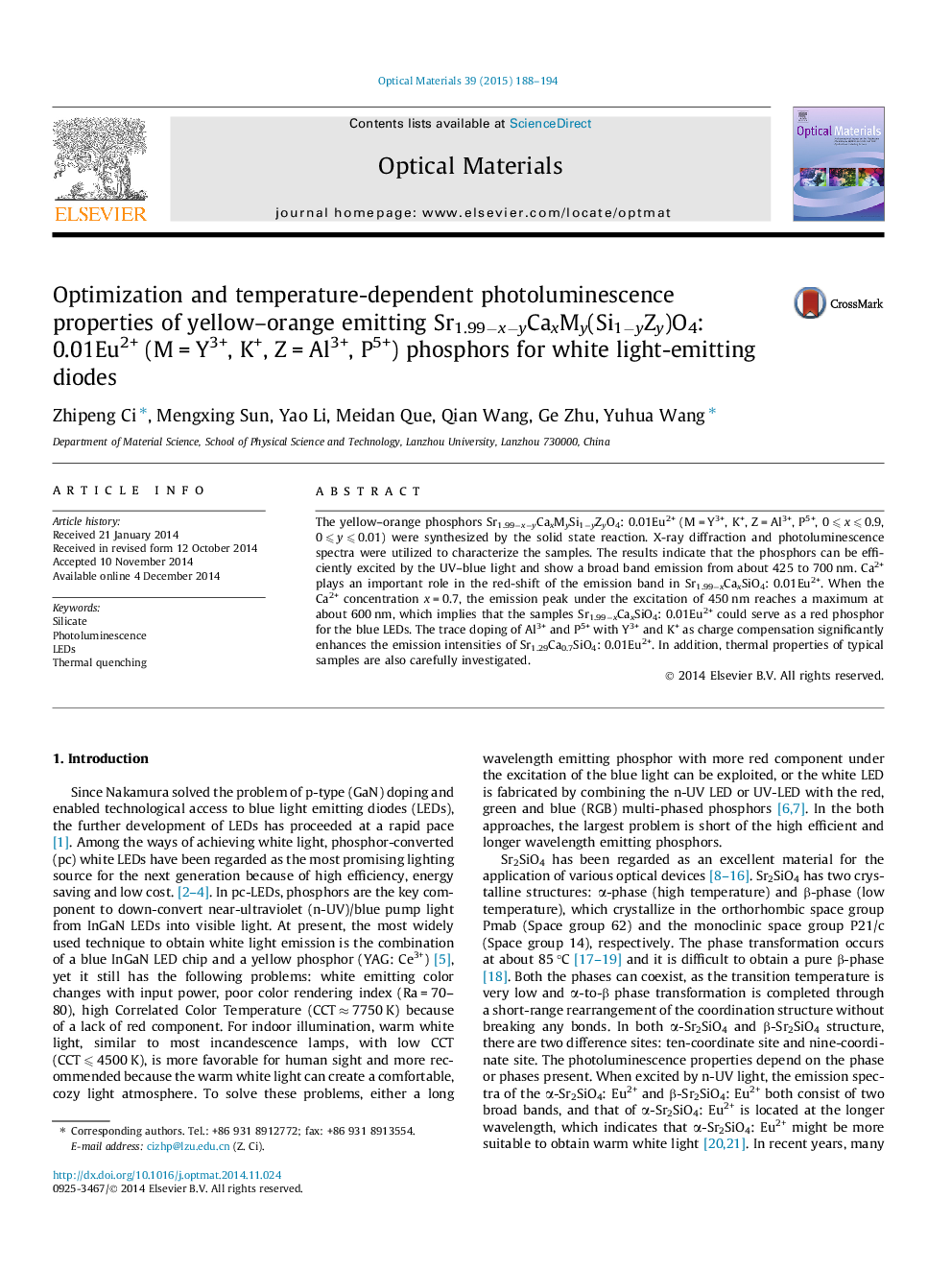| Article ID | Journal | Published Year | Pages | File Type |
|---|---|---|---|---|
| 1494247 | Optical Materials | 2015 | 7 Pages |
•The influence of the doping of Ca2+ on the PL spectra was carefully investigated.•The trace doping of Al3+ and P5+ with Y3+ and K+ can enhance the PL intensities.•Thermal quenching phenomenon was explained by configurational coordinate diagram.
The yellow–orange phosphors Sr1.99−x−yCaxMySi1−yZyO4: 0.01Eu2+ (M = Y3+, K+, Z = Al3+, P5+, 0 ⩽ x ⩽ 0.9, 0 ⩽ y ⩽ 0.01) were synthesized by the solid state reaction. X-ray diffraction and photoluminescence spectra were utilized to characterize the samples. The results indicate that the phosphors can be efficiently excited by the UV–blue light and show a broad band emission from about 425 to 700 nm. Ca2+ plays an important role in the red-shift of the emission band in Sr1.99−xCaxSiO4: 0.01Eu2+. When the Ca2+ concentration x = 0.7, the emission peak under the excitation of 450 nm reaches a maximum at about 600 nm, which implies that the samples Sr1.99−xCaxSiO4: 0.01Eu2+ could serve as a red phosphor for the blue LEDs. The trace doping of Al3+ and P5+ with Y3+ and K+ as charge compensation significantly enhances the emission intensities of Sr1.29Ca0.7SiO4: 0.01Eu2+. In addition, thermal properties of typical samples are also carefully investigated.
Graphical abstractA simple solid-state route was adopted to synthesize a series of phosphors Sr1.99−x−yCaxMy(Si1−yZy)O4: 0.01Eu2+. The PL spectra indicate that Ca2+ plays a significant role in enhancing red-emitting component. The trace doping of Al3+ and P5+ with Y3+ and K+ as charge compensation obviously enhances the emission intensities of Sr1.29Ca0.7SiO4: 0.01Eu2+. Based on the configurational coordinate diagram, the thermal quenching phenomenon of typical samples is also reasonably explained.Figure optionsDownload full-size imageDownload high-quality image (165 K)Download as PowerPoint slide
